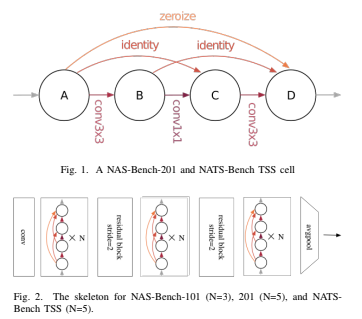Repository for the project of Machine Learning and Deep Learning on NAS algorithm
One of the most difficult aspects of Neural Networks is developing their structure. Hand-design requires a large number of human resources and for this reason NAS algorithms have been created to automate this process. These methods are extremely slow, requiring a full training for each observed model. To expedite this process, various quick-to-compute measures can be used instead of training to evaluate networks. In this paper, we evaluate two of these metrics (NASWOT and Synflow) and test several search algorithms in order to determine the optimum network configuration for image classification of three distinct datasets using the Nats-Bench in a matter of minutes.
In our experiments, we explored the NATS-bench search space. The skeleton is initiated with one 3x3 convolution with 16 output channels and a batch normalization layer. The main body of the skeleton includes three stacks of cells connected by a residual block. The shortcut path in this residual block consists of a 2x2 average pooling layer with a stride of 2 and a 1x1 convolution. The skeleton ends up with a global average pooling layer.
In this project we use CIFAR-10, CIFAR-100 (Krizhevsky et al., 2009) and ImageNet-16-120 (Chrabaszcz et al., 2017).
-
CIFAR-10 It is a standard image classification dataset and consists of 60K 32×32 colour images equally divided in 10 classes.
-
CIFAR-100 This dataset is just like CIFAR-10. It has the same images as CIFAR-10 but categorizes each image into 100 fine-grained classes.
-
ImageNet-16-120 is built from the down-sampled variant of ImageNet (ImageNet16×16). ImageNet-16-120 con- tains 151.7K training images, 3K validation images, and 3K test images with 120 classes.
- Paper group 8: Neural Architecture Search
- Upload Colab code on GitHub: Guide
- NATS BENCH: repo here
- NAS Without Training: repo here
- NAS Without Training Document: here
- The definitive guide to NAS
- KDNuggets Guide
- Colab Code
- Michele Presti
- Francesca Cossu
- Niccolò Dimonte
